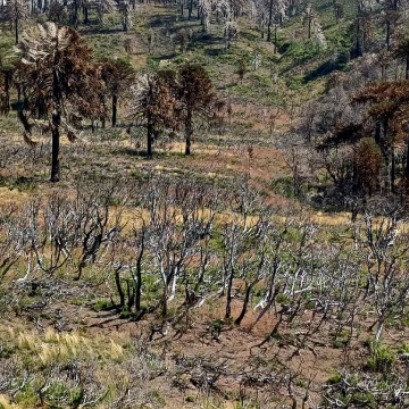
Miniature trees: the technique of bonsai and the art of growing patience
Small, majestic and full of meaning, the bonsais have captured the attention of millions worldwide. A form of expression, connection with nature and even meditation. There are things that do not need to be huge to impact us. Bonsai is the perfect example. Just see one to transmit serenity, beauty and, above all, a kind of respect. It is no accident that their care and appreciation have become an ancient art, practiced with patience and dedication throughout the world.
Although at first glance it looks like a small plant, the bonsai is much more than that. Its value is not in its size, but in the story that it tells, in the technique with which it was molded and in the relationship that creates with who cultivates it. It is not an ornament; It is almost like a living art that evolves over time. Interest in Bonsáis has been growing in recent years, especially among those who seek a way of relaxing or having a more intimate link with nature. It is an activity that invites you to pause, observe and work carefully. It is not rapid results, but of constancy and observation. In addition to being beautiful, they have a strong symbolic burden. Many cultures see them as a representation of harmony, balance and longevity. It is not uncommon for them to be present in homes, offices and even temples, as a reminder of the connection between the human being and the natural world. A trip to their roots: origin and history The Bonsai has its roots in China, although many think it was born in Japan. The ancient Chinese practiced the Penjing, which consisted of recreating miniature natural landscapes, and within that, they also molded trees. This art arrived in Japan around the sixth century along with Buddhism, and there evolved. In some countries, the bonsais are used as therapy for people with anxiety or depression. In Japan, Bonsai became a symbol of status and spirituality. The Buddhist monks used it as a meditation tool, and over time it was adopted by the nobility and samurais. It was not just a plant, it was a way of understanding the world: beauty in the imperfect, simplicity, contemplation. In many cultures, a Bonsai at home is considered an amulet of good luck, prosperity and peace. Its presence transmits tranquility and is believed to attract positive energy. Some even say that taking care of a bonsai can help you develop qualities such as discipline, concentration and empathy. How is a bonsai? Creating a bonsai is not something that is done overnight. The process implies technique, time and a lot of patience. It all starts with a young tree, which can be cultivated from seed, cut or bought in a nursery. From there, the form is worked with special tools, strategic pruning and wiring. The objective is to imitate the shape of the trees in nature, but in miniature. To achieve this, both branches and roots are controlled. The type of pot and substrate also influence its development. Nothing is random. Each cut and each movement are designed to help the tree express a style. During centuries, knowledge about Bonsáis was a well -stored secret, transmitted from generation to generation. But in the twentieth century, after World War II, the world began to be interested in this practice. Since then, the Bonsai has been globalized and today there are exhibitions, schools and collectors on almost all continents. A Bonsai can cost from a few hundred pesos to millions. In Japan, Bonsais has been auctioned for more than one million dollars. There are several Bonsai styles, such as the formal vertical, the inclined, the waterfall, among others. Each has their own aesthetics and symbolism. But the important thing is not to follow strict rules, but to understand the nature of the tree and work with it, not against it. If you are thinking of entering the world of Bonsai, it is best to start with resistant and easy -to -handling species. Some of the most recommended for beginners are the ficus, the Chinese elm, the Serissa, the Junípero and the Ligustrum. These species tolerate pruning well and adapt to different environments. A good advice to begin with is not obsessing with perfection. It is better to enjoy the process than to frustrate you for mistakes. You will learn along the way. It is also key to observe your tree frequently, understand your growth, your rhythm and your water, light and nutrient needs. Bonsáis teach us to have patience, observe and care for. They represent a philosophy of life where small has immense value. If you have ever felt curious about them, this is a good time to let yourself catch for their magic. You do not need to be an expert, just want to learn and enjoy the way.
IT MAY INTEREST YOU
 The forest of the oldest shadows: the story of the petrified trees
The forest of the oldest shadows: the story of the petrified trees
One of the natural treasures of Río Negro turns 23 years old under the protection law that allows its conservation. Where it is and how it was formed. Río Negro celebrates 23 years of conservation in the petrified forest as a Protected Natural Area (ANP). It is a space of 625 hectares that protects an exceptional site of fossil trunks that date back more than 60 million years.
 Specialists from 10 provinces develop forest landscape restoration strategies throughout the country
Specialists from 10 provinces develop forest landscape restoration strategies throughout the country
The program is developed by researchers from INTA, Conicet and the Argentine Wildlife Foundation.
 Experts cant believe it, but this tree is the oldest in the world and continues to bear fruit: it is 4,000 years old.
Experts cant believe it, but this tree is the oldest in the world and continues to bear fruit: it is 4,000 years old.
Nature keeps secrets that defy the passage of time, and one of the most surprising examples is a tree that, approximately 4,000 years old, continues to bear fruit today. This specimen has become a symbol of resistance and longevity, capable of surviving climate changes, landscape transformations and human activity itself.




















